New Update: Boost Social Proof with Reviews & Automation
New Update: Boost Social Proof with Reviews & Automation
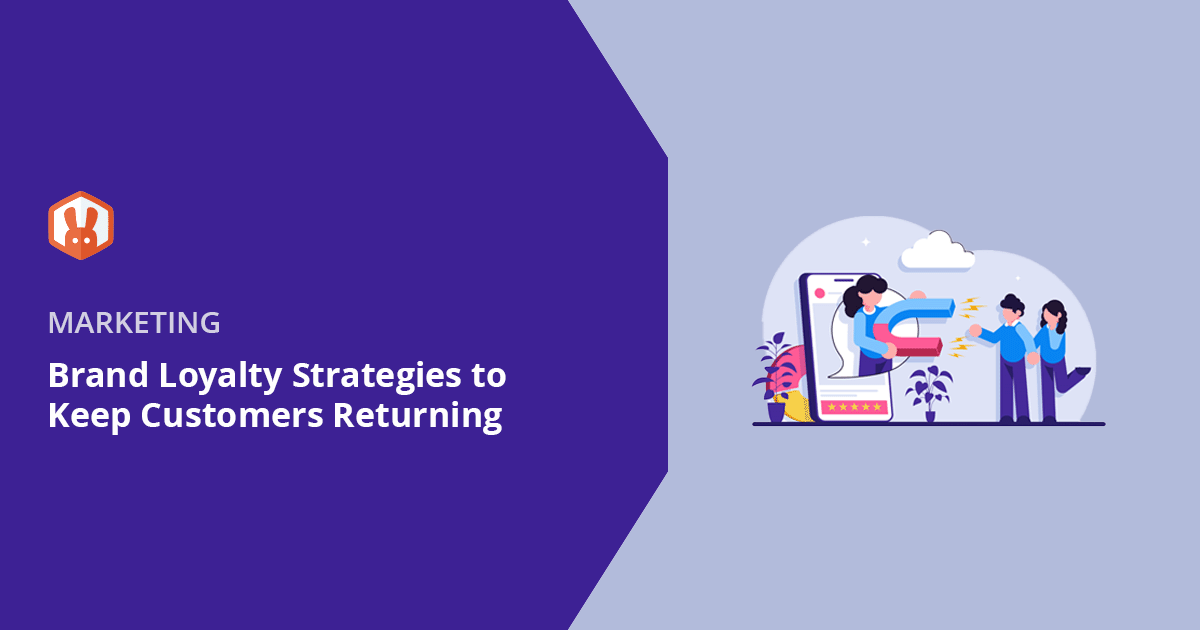
 John Turner
John Turner
 John Turner
John Turner
It’s easy to get caught up in the chase for new customers. But relying only on new leads can feel like constantly refilling a leaky bucket, which is exhausting and expensive.
I’ve found that focusing on existing customers is the real key to long-term growth. In this guide, I’ll share the brand loyalty strategies I use to keep people coming back, spending more, and referring others along the way.
Skip to the brand loyalty strategies:
A brand loyalty strategy is a plan to keep your customers engaged, happy, and coming back to buy from you again. Instead of focusing only on getting new leads, it’s about building real trust with the people who already chose you once.
Why does that matter? Because loyal customers are more profitable. They spend more over time, cost less to retain, and are more likely to recommend your business to others.
In fact, returning customers spend 67% more on average than new ones. For WordPress site owners, bloggers, and small business sellers, that kind of loyalty can be the difference between a side hustle and a stable, growing business.
Brand loyalty develops in five stages: awareness, consideration, purchase, repeat purchase, and advocacy. Each stage represents a deeper level of trust and engagement with your brand, and knowing where your customer is can help you guide them to the next step.
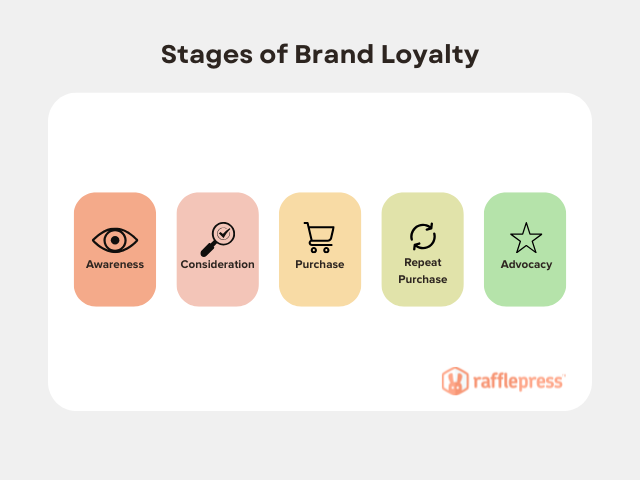
Small improvements at any stage can have a huge impact on how loyal your customers become and how often they come back.
You don’t need a massive budget or a full marketing team to build loyalty. In my experience, the most effective brand loyalty strategies are simple, repeatable, and built on genuine connection.
Below, I’ll walk you through the exact tactics I use (or recommend) to keep customers coming back and turn them into your biggest advocates along the way.
If customers feel emotionally connected to your brand, they’re far more likely to stick around, spend more, and tell others about you.
According to research shared by Mower, emotional connections in financial services can increase customer lifetime value by up to 800%. That shows just how powerful emotional loyalty can be, and it’s just as relevant for small businesses.
You can build it by telling your story and being consistent with your voice and values. What do you stand for? Why did you start this? When people relate to that, they remember you. And they come back.
Patagonia is a great example. Their mission to protect the planet shows up everywhere, from product tags to emails. Their tone is always consistent, and their story isn’t just on an About page. It’s at the heart of everything they do.
When they ran a bold ad that said “Don’t Buy This Jacket,” it wasn’t a gimmick. It was a real reflection of their values. That kind of honesty builds trust and loyalty.
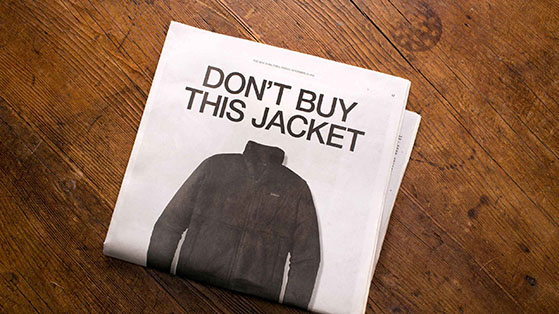
To do this, you can:
The easiest way to keep customers coming back is to reward them for it and give them a reason to bring others with them.
Tiered loyalty programs and referral rewards do both. You’re not just saying “thanks,” you’re showing that loyalty has real value.
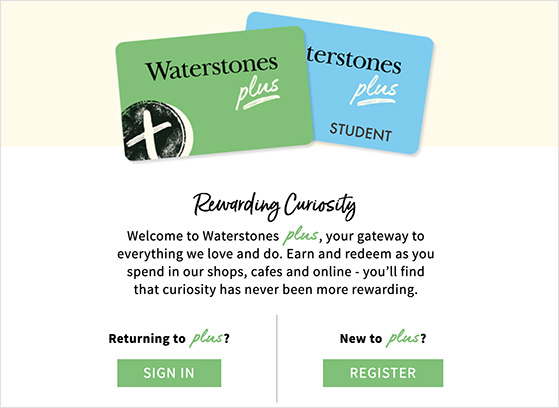
Here’s how loyalty and referral programs work:
If you’re using WordPress, one of the simplest ways to run a referral campaign is with RafflePress. It’s the best WordPress giveaway plugin designed to help you grow your audience through contests that reward people for taking action.
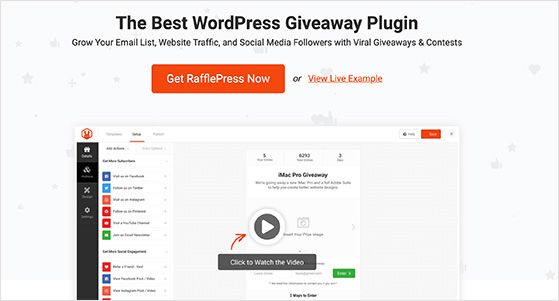
I use it to create referral-based giveaways where participants earn extra entries for every friend they invite.

It’s great for boosting email signups, increasing traffic, or creating buzz around a new product. And since it handles the entry tracking automatically, you can launch a referral giveaway in minutes.
Programs like this make it easy to turn loyal customers into brand advocates. Here are some more referral marketing ideas to get you started.
Support that’s fast, empathetic, and consistent turns casual buyers into repeat customers.
Zappos famously built its entire brand on customer service. They gave their team the freedom to go above and beyond for shoppers, and it paid off. According to Cognitive Market Research, that focus on service led to exceptional loyalty and over a billion dollars in sales before Amazon acquired them.
They even once recorded a customer support call that lasted 10 hours and 43 minutes. It’s an extreme but real example of how seriously they took human connection.
You don’t need a call center to earn that kind of loyalty. Just make sure your customers feel seen and supported.
Here’s how I keep customer experience simple:
You can also collect feedback with a one-question survey or a quick chat plugin. That way, you’re not guessing what’s working. Your customers are actually telling you.
The more relevant your marketing feels, the more likely your customers are to open, click, and come back.
People want to feel like you know them. Not just their name, but what they like, what they’ve bought, and what they might want next.
You can start by using simple data you already have:
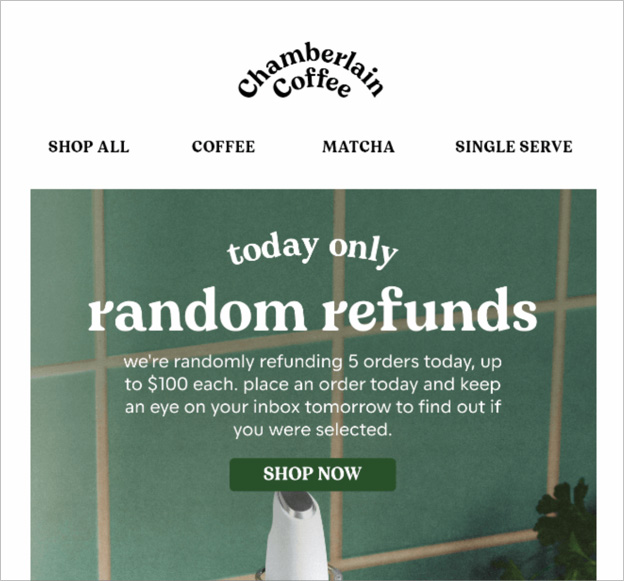
For example, if someone buys a baking course from your site, you can follow up with a discount on baking tools or an invite to your baking newsletter. These small details make your brand feel more helpful and less like a mass email machine.
Most email marketing services, like Constant Contact or MailerLite support basic segmentation and automation. Just set the rules once and let your data do the heavy lifting.
Customers stick around longer when they feel like they’re part of something, not just buying from you.
A strong community turns your audience from passive buyers into active participants. It gives them a reason to stay connected between purchases and builds trust that no ad campaign can replicate.
You can build community in simple, low-lift ways:
One of the best examples I’ve seen is the WPBeginner Facebook group. It’s full of WordPress users helping each other solve problems, and it creates a direct line between the brand and its audience.
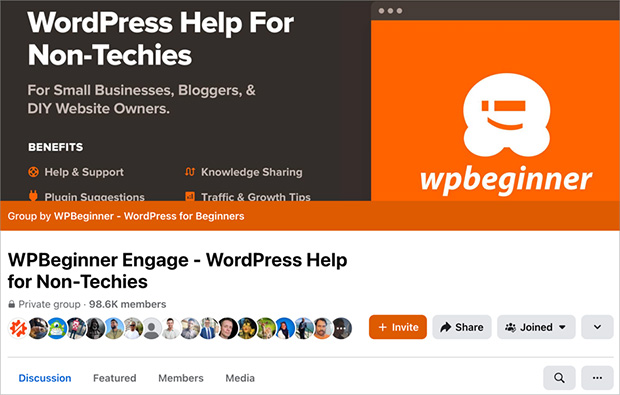
The group adds value, builds loyalty, and reinforces the brand’s expertise without needing to sell.
If you create a space where people feel heard, supported, and included, they’ll want to keep coming back.
Customer reviews and shared content build credibility and strengthen loyalty.
When people see others using and enjoying your product, it creates trust. And when your customers take the time to share their own experience, it deepens their connection to your brand.
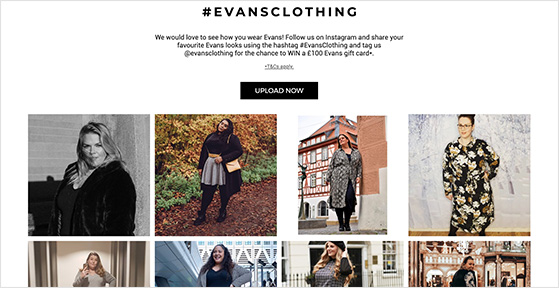
According to a Nielsen-backed survey, 92% of consumers trust personal recommendations from people they know. That kind of trust can’t be bought. It has to be earned and encouraged.
Here are a few ways to invite that kind of engagement:
This kind of content makes your brand feel more human and relatable. It also gives loyal customers a way to participate, not just purchase.
You can use a giveaway plugin like RafflePress to run giveaways that encourage image submissions or written reviews as part of the entry.
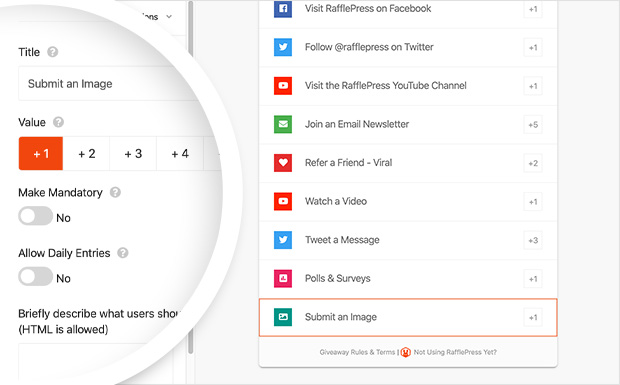
It’s a simple way to collect user-generated content while rewarding your audience.
Customers are more loyal to brands that reflect their values and stand for something they believe in.
Price and convenience still matter, but purpose is what creates long-term connection. Buyers want to support businesses that do more than sell and want brands that care.
You can show that alignment in simple ways:
Big brands like Nike and Ben & Jerry’s have shown how powerful this can be. Both have taken public stances on social justice issues, aligning with causes their customers care about.
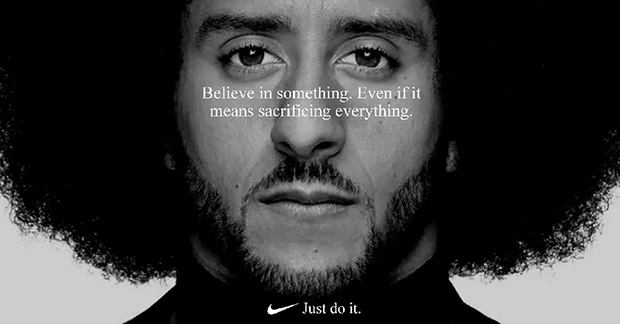
That kind of brand activism deepens emotional connection and drives loyalty beyond product quality.
You don’t have to go global to make this work. Just be honest, consistent, and clear about what your brand stands for. People notice.
If you want to grow customer loyalty, you need to measure it and use that data to make better decisions.
Most business owners focus on sales, but the real insight comes from tracking how often people come back, how long they stay, and how likely they are to recommend you.
Here are a few loyalty metrics worth tracking:
You can collect this data through your store, membership plugin, or email tool. For broader insights on visitor behavior and return traffic, it helps to add Google Analytics to your website. That way, you can monitor which pages bring people back and where they’re dropping off.
Even a simple monthly review can help you spot trends and improve your loyalty efforts over time.
You don’t need custom code or a full tech stack to build customer loyalty. With a few popular WordPress plugins, you can set up referral programs, send targeted emails, collect reviews, and more from your dashboard.
Here are some tools I use and recommend:
You don’t need to use everything at once. Start with one or two tools that fit your goals, then build from there.
Building brand loyalty doesn’t happen overnight, but it’s one of the best long-term strategies for sustainable growth. When you focus on connection, consistency, and rewarding your best customers, they’ll keep coming back and bring others with them.
You can launch a referral-driven loyalty giveaway in minutes with RafflePress to start building loyalty today.
Here are several other guides to help with your brand loyalty strategy:
If you liked this article, please subscribe to our YouTube Channel for RafflePress video tutorials. You can also find us on Twitter and Facebook.
Disclosure: Our content is reader-supported. This means if you click on some of our links, then we may earn a commission. We only recommend products that we believe will add value to our readers.
Copyright © 2024 SeedProd LLC. RafflePress® is a registered trademark of SeedProd LLC